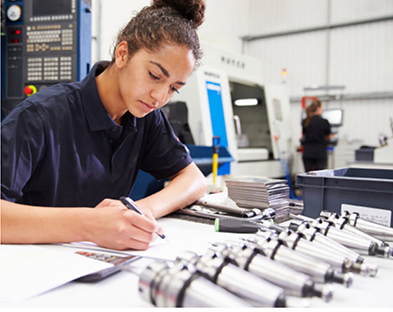Why should women work in logistics?
Numerous scientific studies have shown that gender diversity in the workforce not only fosters collaboration, understanding, and tolerance, but also boosts competitiveness, productivity, and corporate social responsibility.
 Editor's Note: This weeks' annual meeting of CSCMP will place special emphasis on attracting women to our industry. Anna Mateu, Vice President of Operations, iContainers Spain, shares her views on the subject.
Editor's Note: This weeks' annual meeting of CSCMP will place special emphasis on attracting women to our industry. Anna Mateu, Vice President of Operations, iContainers Spain, shares her views on the subject.
It’s lamentable that the debate on discrimination against women in the labor force is still very much an open topic, and one that affects all economic sectors and positions/levels of responsibility. In certain industries such as logistics and transportation, the difference in gender representation is so large that it trumps any statistic that could indicate a trend of improvement.
One cannot deny that the logistics sector has traditionally been associated with physical work and, and consequently, considered a masculine sector. In fact, upon a deeper look into the logistics industry, we see that jobs involving a considerable amount of physical work such as machine operators and storage technicians are very much male-dominated. And on the other end of the spectrum, women hold predominantly service and administrative positions.
However, the introduction of new technologies within the sector, be it in process management or goods management where automation and robotics are required, should reduce the entry barriers for women seeking to set foot in this industry. This is especially so as the logistics and transport sector slowly gains traction in becoming one of the main sources of employment. And this is largely due to the extraordinary pace at which the online sales market has been developing in recent years.
Should women take this chance to inject themselves into the sector for a shot at professional development? Without a doubt. But in addition to the rapid development of new technologies, the industry should also provide men and women with access to jobs with equal footing in order to further boost gender equality values.
The role of women in the logistics and transportation sector
The latest data from the logistics and transportation sector show the sector taking on the key role in economic recovery. This is propelled, in large parts, by the boom in ecommerce and international transactions performed over the internet. In fact, the parcel sector, which is the sector most directly related to internet commercial activity, has been growing at a rate of over 20%.
Despite the budding figures, there’s still a huge gap between the number of women and men working in the sector. Women made up 46.8% of the US labor force in 2015. However, of the 7.7 million workers in the US Transportation & Utilities sector, women constitute 22.6%.
According to the US Bureau of Labor Statistics, the trade, transportation, and utilities industry is the second largest employer of women, after manufacturing. In 2016, the industry employed 11.063 million women, registering a 3.9% increase from 2006.
Already, many companies have taken on this task by introducing aspects such as flexible working hours, professional retraining and measures to avoid loss of seniority. These perhaps constitute not only as adequate solutions to dealing with problems arising from a lack of work-life balance, but also conveys the possibility of permanence and professional development for women in the sector.
That said, the training sessions could offer women knowledge related to the logistics sector such as engineering or those related to technology and R&D. This could then help put the spotlight on the logistics sector as a field of opportunities for women.
Numerous scientific studies have shown that gender diversity in the workforce not only fosters collaboration, understanding, and tolerance, but also boosts competitiveness, productivity, and corporate social responsibility.
New survey shows keys to recruitment of women to manufacturing sector -Modern Materials Handling
Embarking on such a transformation leads to more equal employment rates between men and women. This is a desirable objective for any company, regardless of the sector in which it operates. But I would argue that such a movement is even more vital for the logistics sector, where the gap between men and women is not only abysmal, but complete unjustified in this day and age.













